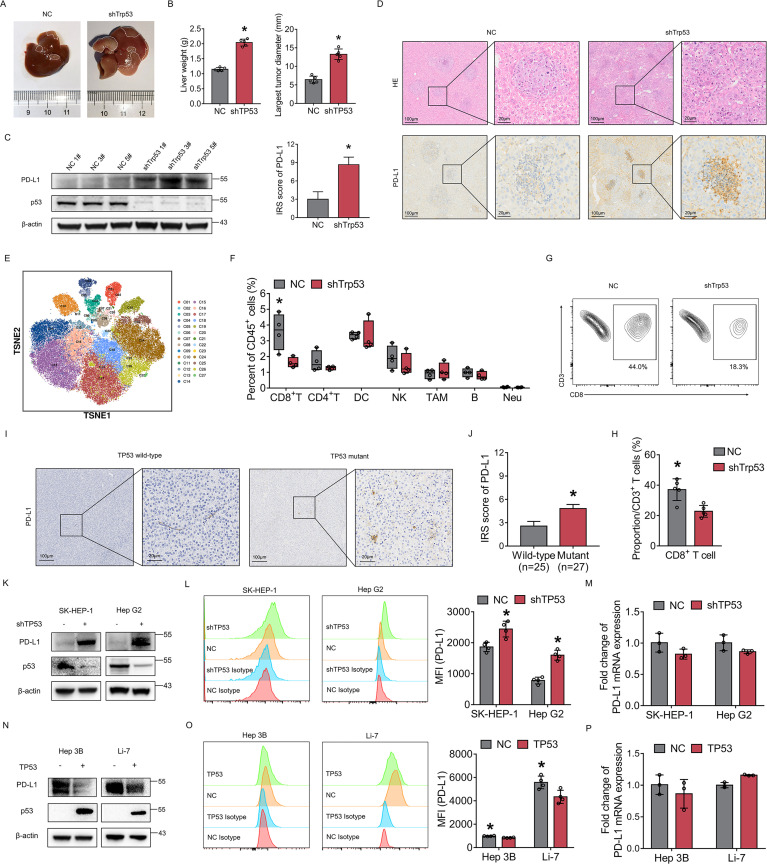Figure 1.
Loss of p53 promotes PD-L1 expression and reshapes immune microenvironment in HCC. (A) The plasmid-induced mouse HCC model was constructed. Representative images of liver tumors in NC and shTrp53 group. The tumor area of shTrp53 group was larger than that of NC group. (B) The mice liver weight and the largest tumor diameter were measured in NC group and shTrp53 group. (C) PD-L1 protein was detected by western blotting in mouse tumors of each group. β-actin was used as the loading control for western blotting. (D) H&E staining and IHC staining of PD-L1 expression in mouse tumor tissues. Comparison of IRS score of PD-L1 between Trp53 wild-type and Trp53 knockdown groups. (E) t-SNE plots of mouse tumor CD45+ cell clusters. (F) Percentages of immune cell subtypes in mouse tumors of each group. (G) CD45+, CD3+ and CD8+ T cells extracted from mouse tumors were analyzed by flow cytometry. (H) Percentages of CD8+ T cells in NC group and shTrp53 group. (I) IHC staining of PD-L1 expression of tumor tissues from patients with TP53 wild-type and TP53 mutant HCC. (J) IRS of PD-L1 in TP53 wild-type and TP53 mutant HCC tissues. (K–M) The expression of PD-L1 in SK-HEP-1 and HepG2 cells with or without TP53 knockdown were detected by western blotting (K) flow cytometry (L) and qRT-PCR (M). (N–P) The expression of PD-L1 in Hep 3B and Li-7 cells with or without TP53 overexpression were detected by western blot (N) flow cytometry (O) and RT-qPCR (P). The bars were compared by Student’s t-test. *p<0.05, compared with the NC (B, D, G, H, L, M,O, P) or p53 wild-type (J) groups. DC, dendritic cell; HCC, hepatocellular carcinoma; IHC, immunohistochemistry; IRS, IRS, Immune Reactive Score; MFI, mean fluorescent intensity; mRNA, messenger RNA; Neu, neutrophils; NK, natural killer cell; PD-L1, programmed death ligand 1; RT-qPCR, Real Time Quantitative Polymerase Chain Reaction; TAM, tumor associated macrophage; t-SNE, t-Distributed Stochastic Neighbor Embedding.

